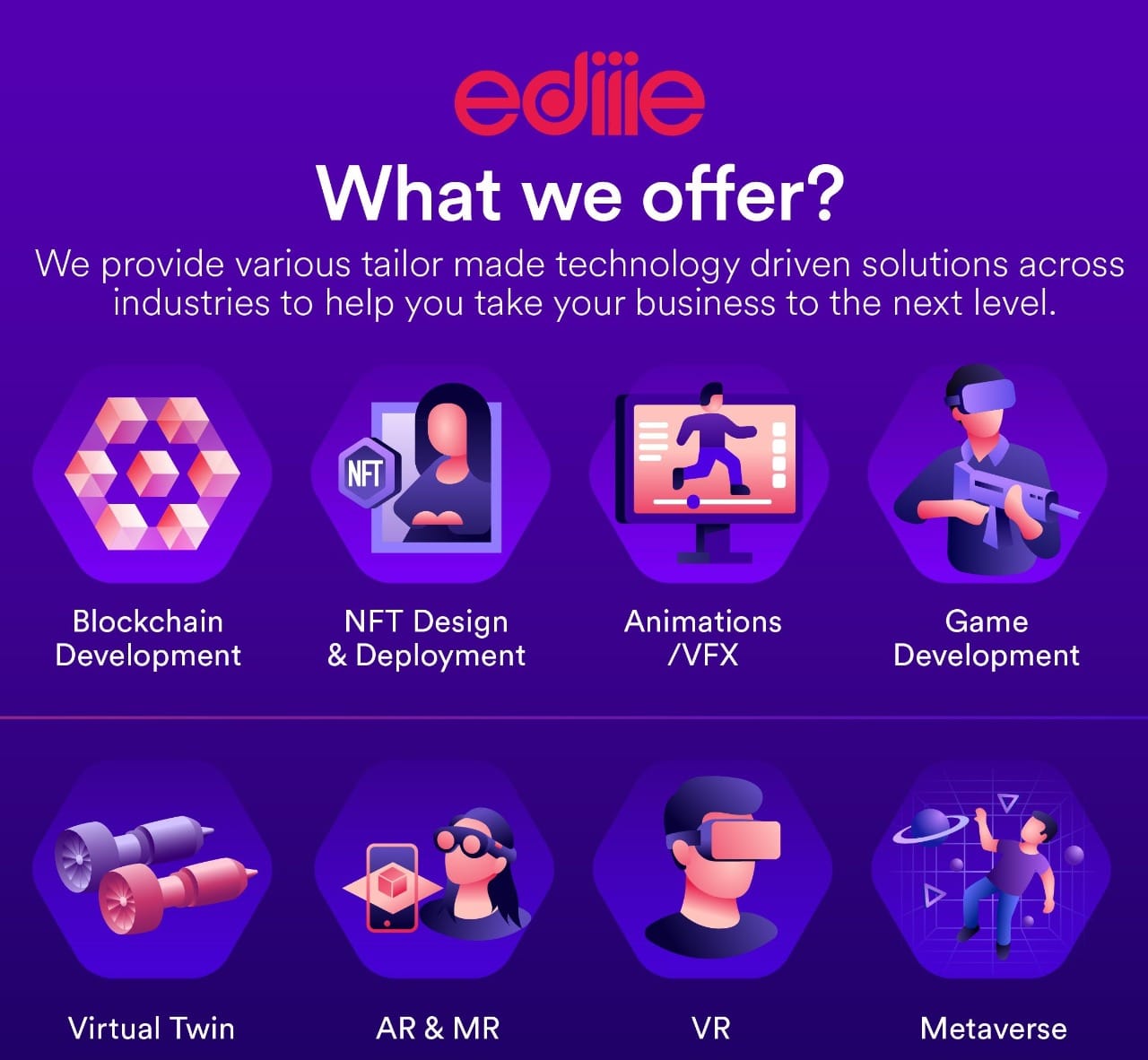Permissioned and Permissionless Blockchains: Differences and Benefits
Blockchain has been with us, for quite a long time in the digital world. Where even Luddites in the tech space have got most of it figured out for themselves.
However, when exploring the frontiers of blockchain technology, one immediately comes upon a key dividing line: permissioned and permissionless blockchains. This is where the revolutionary impact of distributed database systems shines through.
Through this blog, we aim to reveal this rich fabric of permissionless and permissioned Blockchains along with their differences and benefits.
These alternative domains related to blockchain design are an intriguing study in comparison, each offering various benefits and expressing diverse ideologies that define their application across businesses and communities.
As we investigate their contrasts and advantages, we will discover the possibilities each path has for a society more entangled with blockchain's promises.
Join us on this journey as we explore new blockchain trends. And the outlines of these fascinating blockchain-based systems, exposing their distinct offerings to the inner workings of present-day technological society.
Decoded: What is a Permissioned Blockchain?
A permissioned blockchain is a private, regulated digital ledger in which communication with the network is limited to a designated group of individuals or entities.
Public blockchains allow everyone to join and participate regardless of any restrictions. Permissioned blockchains, on the other hand, require consent or authorization from an official or governing institution to view, transact, and validate data.
Because of this regulated access, permissioned blockchains are well-suited for use cases where rigorous monitoring of users and their information is required. Even if one’s opting for Polygon blockchain development.
Picture this: Participants in a permissioned blockchain frequently face establishing one's ID while their actual-world identities are recognized and validated.
The network's governance is often centrally controlled, with a single body or collective having been authorized to make decisions concerning the network's rules, protocols, and privileges.
Permissioned blockchains are particularly appealing for organizations and corporations wishing to capitalize on the application of blockchain technology – while retaining legal compliance, data protection, and quick handling of transactions.
Differences between Permissioned Vs Permissionless Blockchain
Now that we’re better equipped with the knowledge of what permissioned blockchain networks entail, it’s important to know the differences it shares with its other moniker.
You may want to opt for a Solana development company, but permissionless as opposed to permissioned, differ on certain grounds – whether it be the access levels, how it is governed or decentralized. Here are some of the major differences between the two types:
✔️ Permissioned Blockchain
Access Levels: A blockchain with permission is only accessible to a small number of participants. For access to the network, do business, and confirm transactions, users must have authorization or clearance from a single regulating or oversight body.
Governance: The regulations, guidelines, and approvals of the blockchain are often controlled by a single company or group. Changes and upgrades frequently need the permission of the governing authorities.
Transaction Privacy: It provides regulated permission to see information about transactions and frequently incorporates privacy-enhancing functions. All of this is essential in making it highly suited for commercial and corporate use cases.
Utilization: A permissioned blockchain network is commonly used in commercial and company apps, particularly those requiring confidentiality, safety, and restricted access to data. For instance, it’s utilized in the administration of supply chains, trades in money, medical data, blockchain in healthcare, and in other such spaces.
Establishing ID: The subjects in the permission-based blockchain often go through confirmation of identity processes which is key in keeping matters secure.
This, in addition to the fact that the controlling organization further knows and authenticates their identities during this process.
✔️ Permissionless Blockchain
Access Levels: As opposed to permissioned blockchain, in this one, anyone may join a permissionless blockchain network. The stakeholders and active users may access, generate, and verify dealings without requiring central permission of any sort in the process.
Governance: The choices are decided using an agreement-based procedure that incorporates the whole community – that means the stakeholders, owners and active users. Any protocol changes that are to be made, get decided by the decentralized network's majority.
Transaction Privacy: The transactions that have taken place and its data are often accessible and publicly viewable to all those involved in the network. This allows for the network to essentially start increasing its accountability as well as trust in the system in general.
Utilization: As opposed to permissioned blockchain networks, permissionless ones are mostly used for public applications, such as cryptocurrency and decentralized applications (dApps). This also involves an extensive variety of open-use instances in which autonomy and opposition to censorship are crucial.
Establishing ID: Those taking part are able to stay anonymous, and no real-world identification verification is required of them. Cryptographic domains are used by individuals to communicate with the distributed ledger thereby maintaining that sense of autonomy and anonymity in its own way.
Overall, these are some of the major differences that we can observe between permissioned vs permissionless blockchains. It’s an easy concept to grasp, once we recognize how one side advocates for a more centralized way of governance and control.
Whereas the other one, presumes a more open and inclusive environment, such as for blockchain for gaming, where anonymity and trust takes precedence.
Exploring the Benefits of Permissioned Blockchain and Permissionless Networks
It’s no secret that the two – permissioned and permissionless blockchain networks, are polar opposites in their functioning with some shared, common ground.
However, they each hold their own trove of advantages that users have come to discover. Let’s take a look at some of the benefits of permissioned blockchain and permissionless networks:
✔️ Permissioned Blockchain
Safety and Strength: Because limited involvement enables the adoption of enhanced privacy options, permissioned blockchains are well-suited for storing sensitive data and private transactions.
Overt Control: A single coordinating body or administrative organization helps in making decisions and changes faster than normal time. This allows for efficient supervision and oversight of the blockchain's laws, guidelines, and privileges.
Performance Levels: As opposed to permissionless blockchains, central control and a predetermined group of stakeholders in permissioned blockchain result in quicker processing of payments. In turn, this leads to a greater scaling capacity.
Legal Compliance: Permissioned blockchains may be created to conform with certain legislation and legal standards, offering a level of confidence and regulatory compliance. And also adding to blockchain security for all users involved.
✔️ Permissionless Blockchain
Cannot be censored: Censorship resistance is promoted through freely accessible and decentralized leadership. This ensures that no single institution or authority has influence over the network, hence increasing trust and security for all users and stakeholders.
Enhanced Transparency: Buying and selling and all forms of payments on permissionless blockchains are immutable right after they’ve been validated. This increases confidence and transparency for the users by preventing them from being edited or deleted.
Open Platform: Permissionless blockchains encourage creativity by offering a free framework for the creation of multiple apps, smart contracts, and fresh concepts. This is important as it sets the ball rolling – resulting in the emergence of a thriving ecosystem.
Globally Inclusive: A permissionless blockchain system allows anybody to engage, allowing for global participation of users and stakeholders. It also means greater inclusion without barriers to entrance determined by something like privileges or identities.
Choosing the Right Path with the Best Permissioned Blockchain Network
These benefits have been crucial in pointing out how both permissioned as well as permissionless blockchain networks hold an array of advantages for various use cases.
They also share certain benefits such as transparency and cost reductions leading to greater efficiency for any platform or business.
However, the choice for using any one of them ultimately boils down to the specific application and the requirements one may have while adopting blockchain technology into their operations.
That’s because there are various types of blockchain networks being implemented in today’s landscape and businesses have a wide variety to choose from.
Given that they understand the differences and which set of benefits will be most advantageous for them. If you want your organization to integrate blockchain technology into its operations, then you can rely on us at EDIIIE to enable the same.
As a blockchain development company, our team of experts can choose the optimal solution that will suit your decentralized or digital projects. And you will successfully adopt this transformative technology for your business, though only a phone call away.





